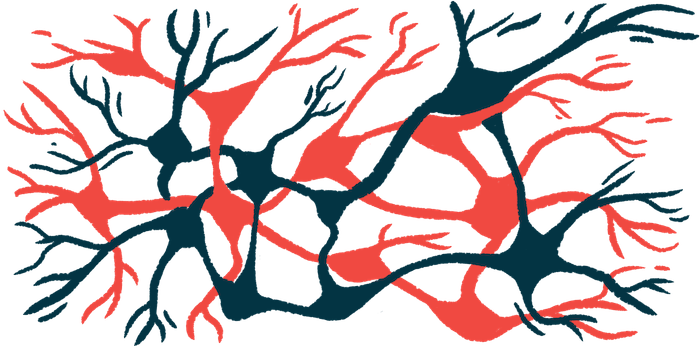ID’d microRNAs may serve as Rett disease progression biomarkers
Role in EVs during normal, Rett-affected neuronal development studied
Written by |

A research team has identified Rett syndrome-specific molecules that regulate gene activity, called microRNAs, that are associated with the growth of patient-derived brain cells and may serve as biomarkers for monitoring Rett progression.
Using 3D organoids that mimic the brain, the team identified these microRNA fingerprints within extracellular vesicles (EVs), tiny particles secreted by cells that carry various bioactive molecules, including miRNAs, to promote cell-to-cell communication.
Details of the discovery were published in Cellular and Molecular Life Sciences, in the study “Involvement of extracellular vesicle microRNA clusters in developing healthy and Rett syndrome brain organoids.”
A genetic disorder that primarily affects females, Rett syndrome is marked by normal early development that’s followed by developmental delays and a loss of motor control. Over time, symptoms such as repetitive motions, walking difficulties, and seizures may emerge.
Nearly all cases are caused by mutations in the MECP2 gene, which encodes a protein involved in regulating the activity of other genes. While the protein is found in most cells, its particularly essential in the brain, where it’s thought to switch on or off the right genes at the right time to help maintain connections between nerve cells.
EVs are tiny membrane-bound bubbles released from cells that can carry a variety of molecules, including proteins, lipids (fats), and RNA. They help cells send messages to each other, which is important for immune responses, cell growth, tissue repair and regeneration after injury, and cell survival.
Recent research has highlighted the role of EVs in neurodevelopmental diseases, including Rett. For example, because not all nerve cells in Rett patients express the mutant MECP2 gene, EVs may allow Rett cells to negatively impact healthy cells.
EV content includes microRNAs, or miRNAs, which are small segments of RNA that regulate the activity of genes. EV miRNAs engage in a range of functions in the brain and spinal cord, like promoting nerve cell growth and controlling the integrity of blood vessels in the brain.
miRNAs role in neuronal development
Here, a team led by scientists at Maastricht University in the Netherlands sought to investigate the role of miRNAs in EVs during normal and Rett-affected neuronal development.
As a model system, researchers grew 3D organoids from human-derived stem cells with and without a MECP2 mutation that’s associated with a severe form of Rett. These mini brain-like structures recapitulate many key features in brain development and function.
EV miRNAs and proteins produced in dorsal and ventral, that is, back and front, forebrain organoids were assessed for up to 75 days, or about 2.5 months, when nerve cells were mature and fully functional. The dorsal and ventral regions of the forebrain are thought to have distinct structural and functional alterations in Rett patients.
The analysis revealed that 20 EV miRNAs were produced at higher or lower levels in Rett organoids than controls, which fell into three groups based on different times of organoid growth.
In control organoids, six miRNAs belonged to a cluster called hsa-miR-302/367, all showing decreasing expression in parallel over time in both dorsal and ventral regions. Among them, four were significantly different in Rett organoids than controls by day 75.
“The high EV expression of these miRNAs in the early stages of neuronal development might thus promote proliferation and the maintenance of [the development] of neighboring cells,” the researchers wrote.
Looking at individual time points, the production of 29 EV miRNAs was either increased or decreased at least once in the ventral or dorsal organoids in Rett and control samples. More than half of these miRNAs belonged to a cluster called C14MC, all of which showed higher expression in Rett samples over controls, with 30% reaching statistical significance.
The researchers noted that C14MC members are known to regulate genes critical for growth and brain development. miRNAs in this cluster also target signaling related to serotonin, a brain signaling molecule that’s found at lower levels in the brains of Rett patients. Thus, an increase in C14MC miRNA levels in Rett may suppress the serotonin pathway.
“Future studies could aim at validating our findings for other [Rett]-causing MECP2 mutations,” the authors wrote. “Once validated, the C14MC miRNAs from biofluid-derived neuronal EVs have the potential to be used as biomarkers for monitoring [Rett] progression and the effect of intervention strategies.”



